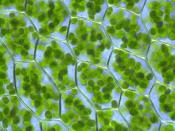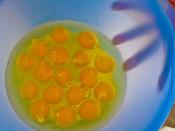Cells are the smallest structures capable of basic life processes, such as taking in nutrients, expelling waste, and reproducing. All living things are composed of cells. Some microscopic organisms, such as bacteria and protozoa, are unicellular, meaning they consist of a single cell. Plants, animals, and fungi are multicellular, meaning they are composed of a great many cells working all together. But whether it makes up an entire bacterium or is just one of trillions in a human being, the cell is a miracle of design and efficiency. Cells carry out thousands of biochemical reactions each minute and reproduce new cells that carry on life.
In multicellular organisms, shape is typically modified to the cell's job. For example, flat skin cells pack tightly into a layer that protects the underlying tissues from invasion by bacteria. Long, thin muscle cells contract readily to move bones. The numerous extensions from a nerve cell enable it to connect to several other nerve cells in order to send and receive messages rapidly and efficiently.
All cells share two essential features. One is an outer membrane which is called the cell membrane that separates the cell from its external environment. The other is the genetic material - the hereditary information - that directs a cell's activities and enables it to reproduce, passing on its characteristics to its offspring. The organization of the genetic material is one of the characteristics that distinguish two fundamentally distinct kinds of cells, prokaryotes and eukaryotes. In prokaryotic cells, all the components, including the DNA, combine freely in the cell's interior, a single compartment. Eukaryotic cells ÃÂÃÂ that make up plants, animals, fungi, and all other life forms ÃÂÃÂ contain numerous compartments, or organelles, within each cell. The DNA in eukaryotic cells is enclosed in a special organelle called the...


